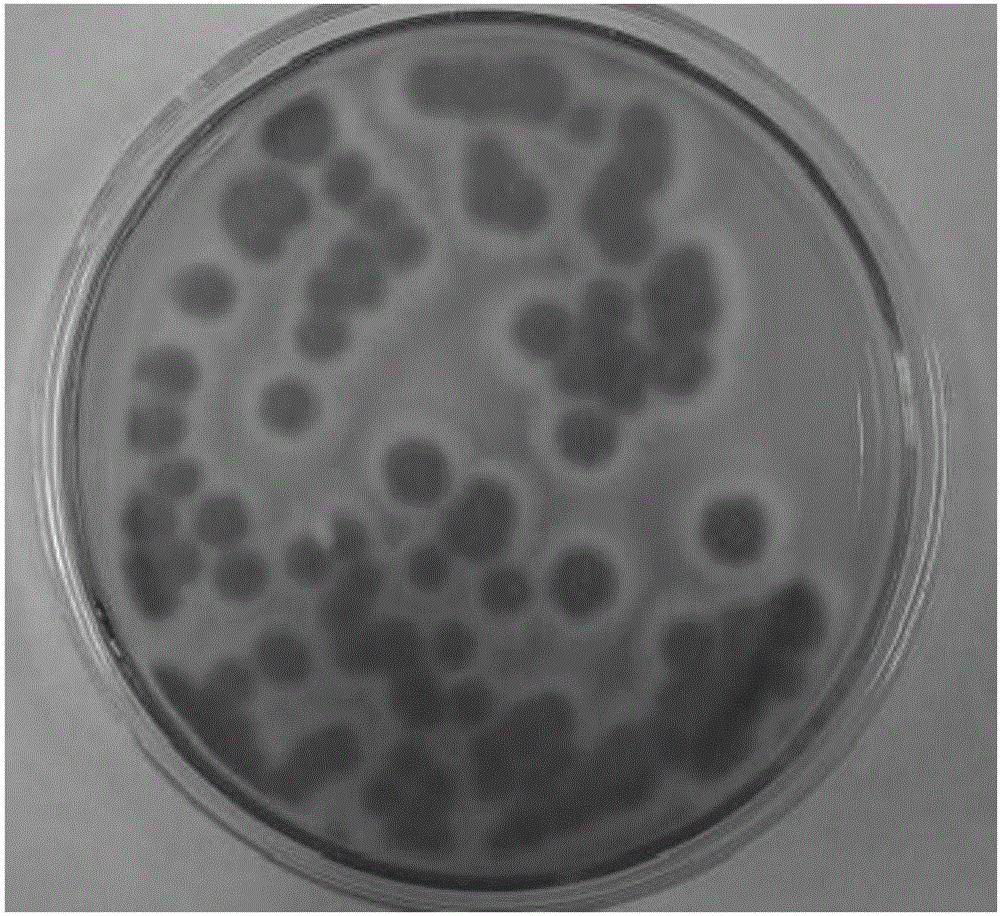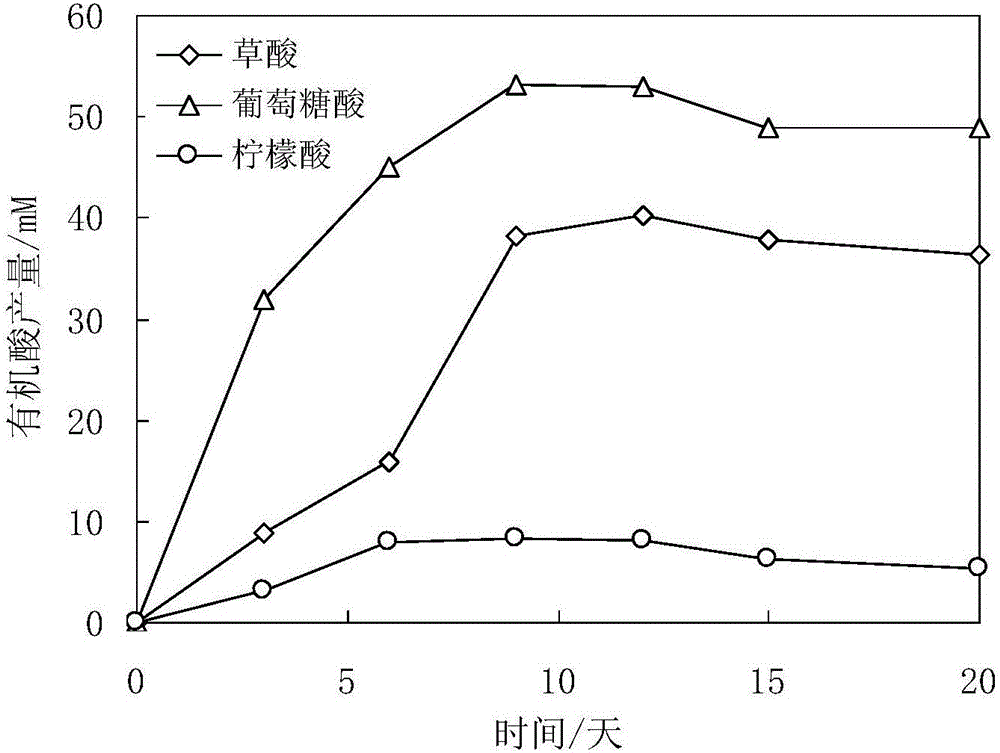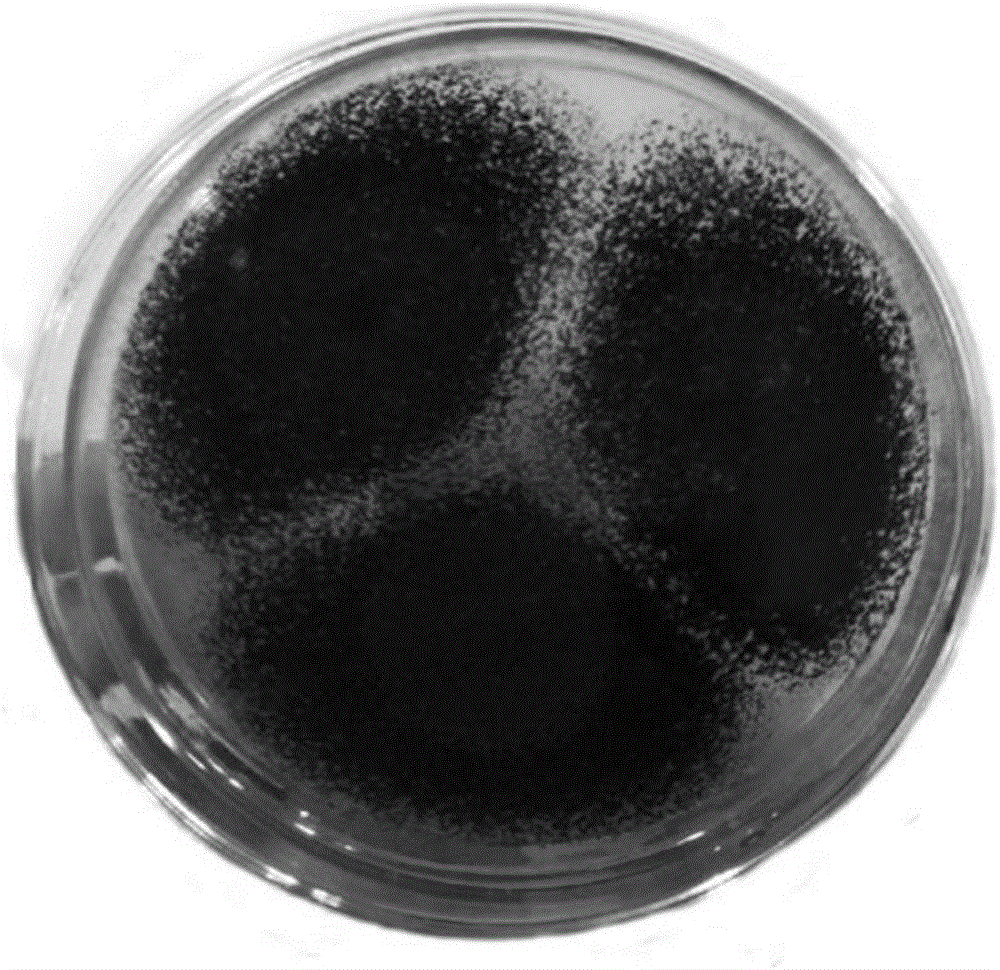Method for conducting bioleaching treatment on heavy metal contaminated soil through composite filamentous fungi by taking straw as carbon source
A filamentous fungus, contaminated soil technology, applied in the restoration of contaminated soil, microorganism-based methods, biochemical equipment and methods, etc., can solve the problems of high treatment cost, limited, single maximum acid production capacity, etc. The effect of low consumption and less reaction equipment
- Summary
- Abstract
- Description
- Claims
- Application Information
AI Technical Summary
Problems solved by technology
Method used
Image
Examples
Embodiment 1
[0037] Isolation and cultivation of embodiment 1 Penicillium simplicissimum NAU-12 and Aspergillus niger A80:
[0038] Weigh 10g of soil collected from a copper mine in Tongling, Anhui Province, pour it into a triangular flask filled with a certain volume of sterile water, at 28°C and 120r / min, shake and cultivate for 1 day, then draw 2mL of bacterial suspension from the triangular flask coated on solid growth medium (NaNO 3 : 1.5g / L, K 2 HPO 4 : 0.5g / L, KCl: 0.025g / L, MgSO 4 : 0.025g / L, yeast extract: 1.5g / L, sucrose: 35g / L, agar: 20g / L), cultured at 28°C for 4 days. Pick the suspected strains with well-developed hyphae and streak them on the solid growth medium containing 3% bromocresol green (acid production indicator). Two times, two purified strains were obtained, named NAU-12 and A80 respectively. Referring to the "Handbook of Fungal Identification" and "Mycology of China", the strains NAU-12 and A80 were initially identified as Penicillium and Aspergillus, respecti...
Embodiment 2
[0043] Embodiment 2 handles single heavy metal Cu polluted soil
[0044] Composite filamentous fungi bioleaching process the method of Cu-contaminated soil, the steps are as follows:
[0045] Step (1), preparation of bacteria agent: according to the method of embodiment 1, obtain bacterial density respectively and be 10 8 Spores / mL of NAU-12 and 10 7 The A80 microbial agent of spore / mL is mixed in a volume ratio of 1:1 to obtain a composite bacterial agent for inoculation;
[0046] Step (2), preparing wheat straw carbon source: mechanically pulverize air-dried wheat straw (total solid content 92.5%) to 1 cm, soak in 1.5% NaOH solution at 80° C. for 2 hours for alkali-heat pretreatment, and set aside;
[0047] Step (3), biological removal of Cu from soil: the soil sample was collected from a copper mining area in Tongling, Anhui Province, the soil sample was yellow-red soil, and the soil pH value was 6.22. After testing, the soil sample was mainly polluted by a single Cu, an...
Embodiment 3
[0055] Embodiment 3 handles composite heavy metal Pb-Zn-Cd polluted soil
[0056] Composite filamentous fungus bioleaching process composite heavy metal Pb-Zn-Cd contaminated soil method, the steps are as follows:
[0057] Step (1), preparation of bacterial agent: with embodiment 2;
[0058] Step (2), preparing rice straw carbon source: mechanically pulverize the air-dried rice straw (total solid content 90.2%) to 1 cm, soak in 1% NaOH solution at 100° C. for 1.5 h, carry out alkali-heat pretreatment, and set aside;
[0059] Step (3), biological removal of Zn, Pb and Cd in the soil: the soil sample was collected from the polluted soil around a lead-zinc mine in Dexing, Jiangxi. The soil sample was Quaternary red soil with a pH value of 5.7. After testing, the contents of Zn, Pb and Cd in the soil sample were 1520mg / kg, 570mg / kg and 28mg / kg respectively, exceeding the national soil environmental quality standard (GB15618-1995).
[0060] Get 250g of Pb-Zn-Cd composite contamin...
PUM
| Property | Measurement | Unit |
|---|---|---|
| tolerance concentration | aaaaa | aaaaa |
| tolerance concentration | aaaaa | aaaaa |
Abstract
Description
Claims
Application Information
 Login to View More
Login to View More - R&D
- Intellectual Property
- Life Sciences
- Materials
- Tech Scout
- Unparalleled Data Quality
- Higher Quality Content
- 60% Fewer Hallucinations
Browse by: Latest US Patents, China's latest patents, Technical Efficacy Thesaurus, Application Domain, Technology Topic, Popular Technical Reports.
© 2025 PatSnap. All rights reserved.Legal|Privacy policy|Modern Slavery Act Transparency Statement|Sitemap|About US| Contact US: help@patsnap.com



